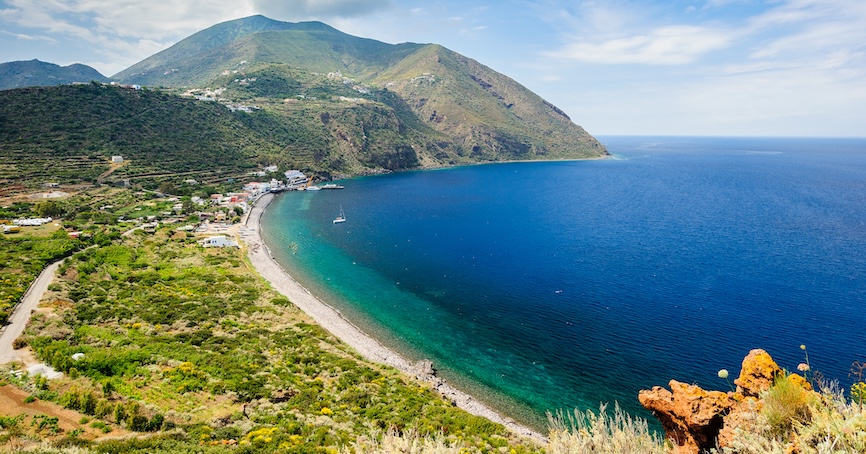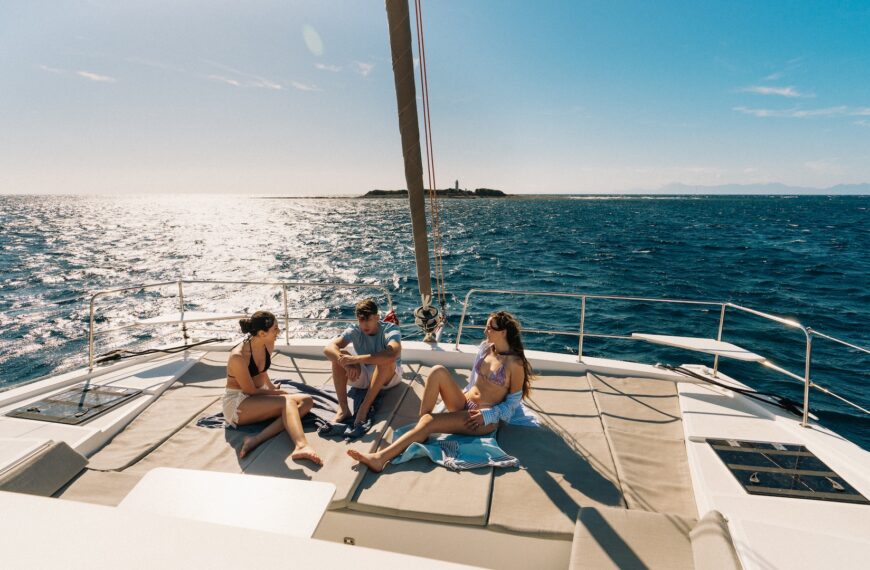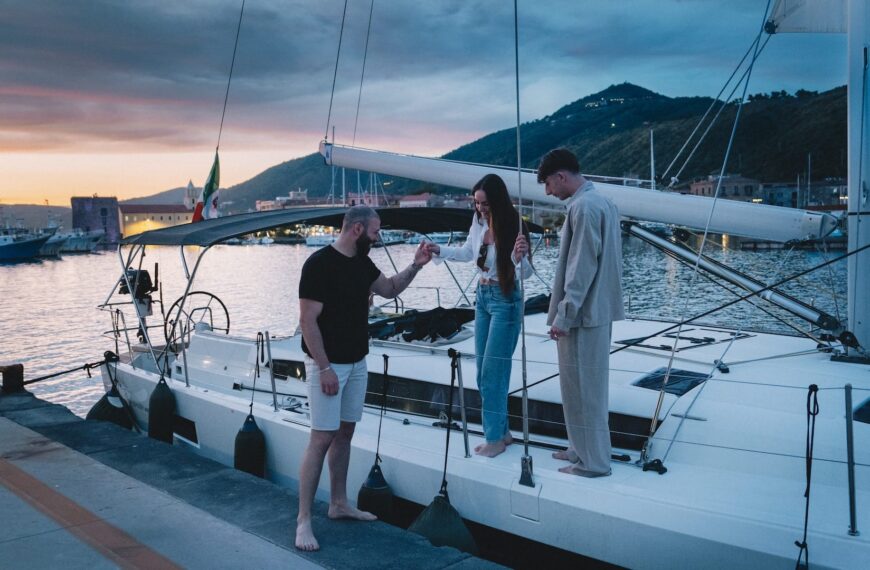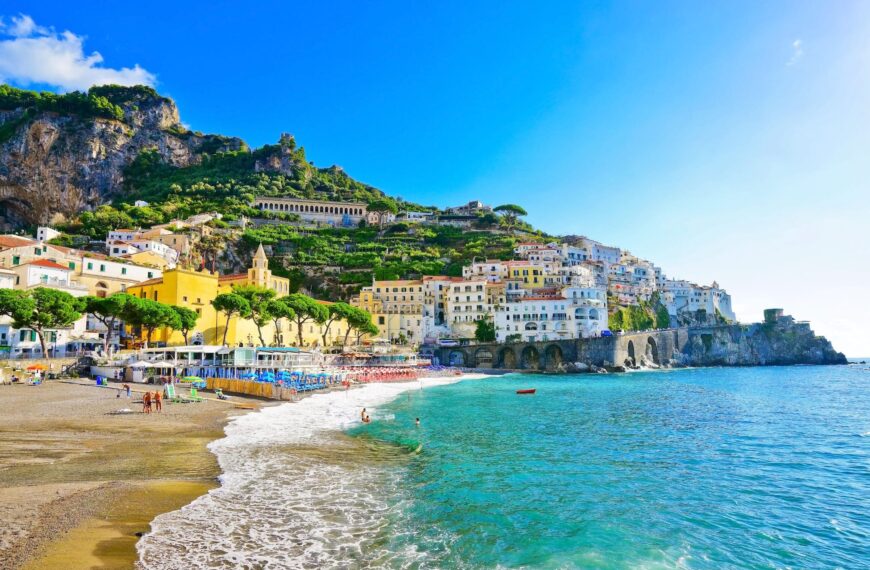Filicudi: The Timeless Allure of an Ancient Island
Amid silence, wild nature, and prehistoric remains, the oldest of the Aeolian Islands welcomes sailors with crystal-clear waters and breathtaking landscapes.
To love the sea is to appreciate silence—and why not, even solitude. These are the conditions anyone landing on Filicudi will likely experience. It is the second westernmost island of the Aeolian archipelago, probably the oldest, and, along with Alicudi, is considered the wildest and least affected by tourism and social life. And while it does receive some visitors in the summer, they tend to be special ones—people who understand and respect the unwritten rules of this unique, untamed place.
One Road, a Few Houses, and Many Mule Tracks
Silence and solitude, yes—but also the ability to live almost entirely without shops, with only one paved road and many mule tracks, and a single bar-restaurant that also doubles as a disco for locals and tourists. Nights here are lit only by the moon. Electricity arrived on the island only in 1986, but it hasn’t diminished the magic of an environment where you’ll find not towns, but clusters of houses—tiny inhabited centers connected by that one road and known as Filicudi Porto, Valdichiesa, Pecorini, Pecorini a Mare, Canale, and Rocca di Ciavoli.
The rest is stone and Mediterranean scrub, with caper plants and figs among the main local products. Even though tourism is the island’s main economic resource, there’s no need for concern—ferries and hydrofoils docking at the port don’t disrupt the suspended atmosphere that seems to pull you into the island’s spell the moment you set foot ashore.
Three Extinct Volcanoes and a Promontory
Reaching Filicudi by sailboat means experiencing its charm to the fullest. It’s not the easiest destination—its distance from the Sicilian coast and the presence of submerged rocks make anchoring tricky—but with good weather and careful navigation, it becomes an unforgettable adventure.
The island is shaped by three extinct volcanoes: Monte Fossa delle Felci (774 m), Monte Montagnola (349 m), and Monte Terrione (278 m). Another prominent feature is Capo Graziano, to the southeast, where a prehistoric village dating back to the Middle Bronze Age (1600–1300 BCE) sits atop its 174-meter-high hill.
The promontory is connected by a low isthmus, making it appear like a separate island from a distance. Sailors should be cautious here, as a shallow area of 2.5 meters at the promontory’s tip can make navigation dangerous, especially in rough seas. Most of the island’s seabed is deep, except in the northern and northwestern parts, where submerged rocks demand careful distance. On the northeastern side, however, you can sail smoothly between Filicudi’s “Canna”—a dramatic sea stack—and the coastline, where beautiful underwater landscapes await, never deeper than 17 meters.
Where to Drop Anchor and What to See
The old port of Filicudi Porto, nestled in the bay along the isthmus connecting to Capo Graziano, is reserved for commercial hydrofoils. However, there are a few moorings and buoys with tender service, or anchorage points at about 15 meters’ depth with good holding ground. Be mindful of underwater cables and weather conditions, as this spot is quite exposed to the wind. Once ashore, you can visit the island’s main village—timeless, simple, and equipped with essential services, including a restaurant and an ATM.
The second-most populated (if we can say that) area is Pecorini a Mare, a tiny seaside hamlet squeezed between mountain and sea. Its small harbor fills with boats in summer, and its charming beach is lined with a restaurant and a few small shops. A nautical center here rents out scooters and diving gear to help you explore the island’s beautiful underwater world. The harbor features a 45-meter-long, 10-meter-wide pier with 8-meter depth at the head.
Circumnavigating the Island: Caves and Sea Stacks
For daytime mooring, Filo di Lorani is a great choice for those seeking solitude. Not far from Pecorini a Mare, it features a secluded pebble beach lapped by crystalline waters and a path leading to an intriguing archaeological site.
The famous Grotta del Bue Marino—also known as the Monk Seal Cave—is unreachable by anchor due to its deep, rocky seabed but can be accessed by swimming or small boats. This spectacular sea cave, 20 meters high and 30 meters wide, is the largest and most beautiful on the island. Inside, a small pebble beach awaits, where shimmering light reflections create an almost magical atmosphere—once a refuge for monk seals.
Continuing the day’s sail, you’ll arrive at La Canna, where anchoring in the clear waters offers a view of the dramatic sea stack rising 74 meters above the sea. Finally, sailing along the island’s northwestern side, don’t miss the peculiar basaltic islet known as Scoglio Giafante. A product of ancient volcanic eruption, only its central lava column remains, forming a strange shape halfway between a ruined tower and, more imaginatively, an elephant—hence the Sicilian nickname, which means “Elephant Rock.”





